Since April, a Ukrainian unit has shared a number of short videos showing a small mortar capable of firing 40mm grenades.
From their patches and TikTok username, 16batzsu, the men’s unit appears to be the 16th Separate Rifle Battalion. They appear to be part of the battalion’s embedded mortar battery and are seen operating other larger mortars and automatic grenade launchers in numerous videos.
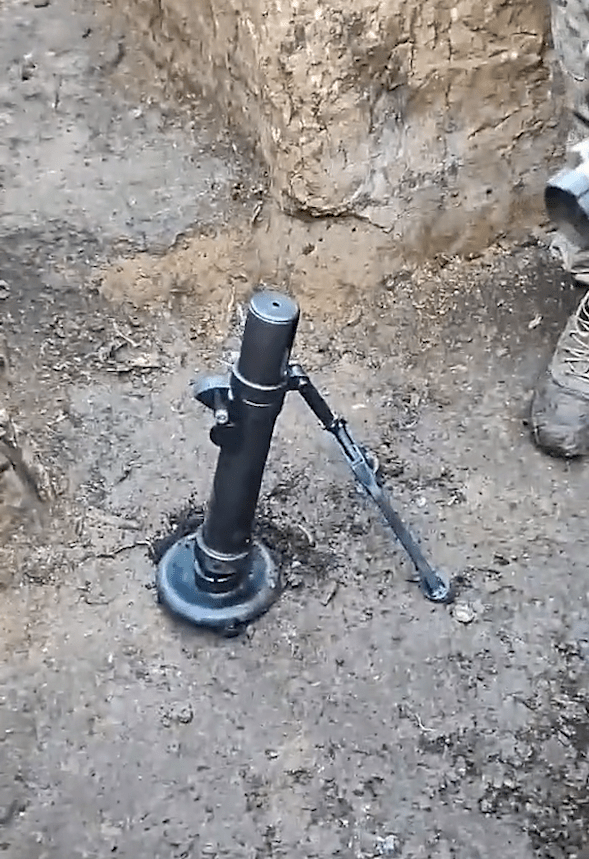
On the 11 February, 16batzsu shared a video showing a small mortar with a stainless steel insert seen dropped into a small hand-held mortar. The same video was shared on their YouTube account under the title ‘New Toy’. While the resolution of the video is low it clearly uses the same barrel sleeve principal seen in later videos. In replies to comments 16batzsu explain that the small mortar has a range of 2km and is 30mm in calibre. This suggests that the weapon may launch 30×29mm VOG grenades normally fired by AGS automatic grenade launchers. Unlike the later 40mm mortars it does not appear to have a bipod. No further videos featuring the 30mm mortar have been shared.

The first video providing a close up look at the 40mm mortar was shared on the 26 April, with the small mortar in a pit next to an 82mm mortar. The mortar uses 40mm high velocity grenades which are slid into the base of a rifled steel barrel sleeve. The rifling is needed to both maximise the grenade’s range but also impart spin which arms grenade. The loaded sleeve is then dropped into the mortar tube, the grenade’s primer presumably strikes the mortar’ firing pin and the grenade is ignited firing it out of the mortar. The sleeve remains in the tube.
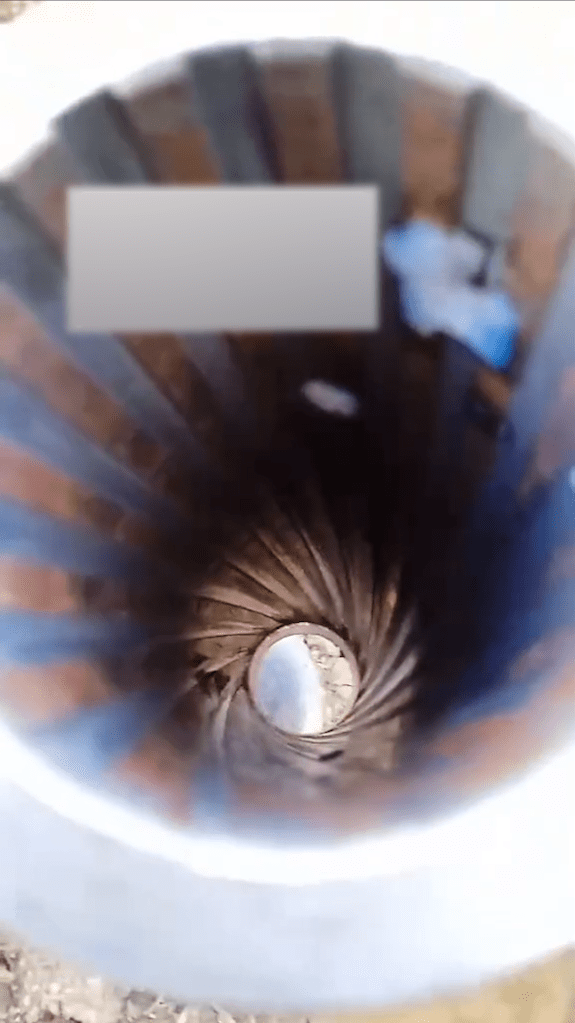
In terms of size the small mortar looks similar to the Ukrainian 60mm KBA-118, however, the base plate, bipod and tube differ. Despite similarities I haven’t been able to find an exact match to a mass-produced mortar. The weapon appears to be well made and the examples seen in the videos appear to be near identical suggesting they may be a locally developed and produced weapon.
In a pair of videos posted on 3 May, we get a closer look at the weapon and a member of the unit explains the principal behind how it works. The tube has a pair of parallel cuts which allow the steel barrel sleeve to be removed. The video shows a pair of the small mortars and also shows the rifling inside the sleeve. The sleeve appears to have approximately 16 rifling grooves and on its exterior are three rings cut into the top end of the sleeves outer surface to aid removing it from the mortar tube.
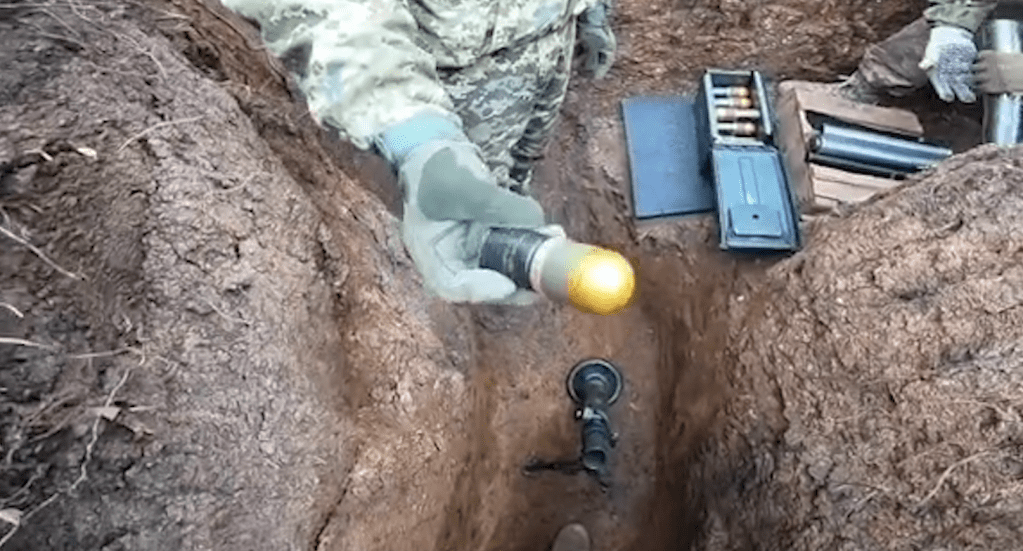
Finally, in a video posted on 9 May, we can clearly see the mortar fired a number of times. The operators can also be seen loading the 40mm grenades into the rifled barrel sleeves. One man loads the three tubes while another fires the mortar. The spent grenade cases are removed with the aid of a metal ramrod. The 40mm grenades which appear in the video are high velocity high-explosive dual-purpose (HEDP) grenades of the type used with Mk19 automatic grenade launchers. The reason the sleeve is rifling is to arm the grenade’s fuze when the round is fired. These include grenades like the US M383, M384, M430 and M677 as well as German DM111 and DM 112.
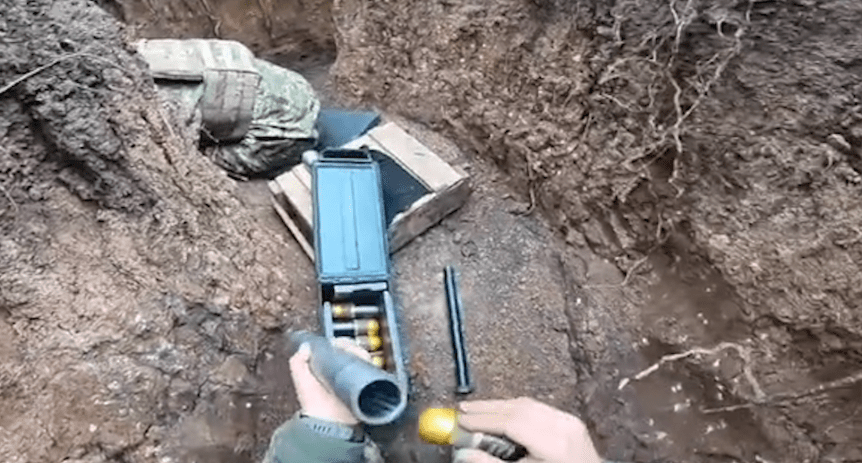
So what is the small mortar for? Why not just use the unit’s Mk19 automatic grenade launcher? My initial theory was that the barrel sleeve might provide an increase in range over the Mk19 though the 2,000 metre range mentioned in one of the videos suggests the mortar has a range on parr with the Mk19. Another theory is that the unit’s Mk19 may be inoperable and they still have a supply of 40mm grenades to use. The grenades are also perhaps more readily available and cost-effective than small mortar rounds. It could also potentially have the effect of mimicking drone-dropped 40mm munitions, keeping enemy combatants on the look out for drones. As a harassment weapon the small mortar seems to have potential, allowing its operator to fire from cover while being relatively lightweight allowing it to shift firing positions quickly. The accuracy of the weapon is difficult to gauge but with the aid of an observation drone rounds could be walked into the vicinity of a target. The mortar is a very interesting piece of innovative engineering.
Thank you to Ukraine Weapons Warfare for bringing the original footage of the mortar to my attention.
Update – 06/06/23: Some additional footage from another member of the 16th Separate Rifle Battalion showing the 40mm grenade mortar in action.
Update – 22/10/23 – Some new footage showcasing the mortar. One of the Ukrainian combatants appears to have a National Guard 4th Rapid Reaction Rubizh Brigade, 3rd Battalion Svoboda patch. The video gives us a good close look at the tub, tangent sight, barrel sleeve and the bipod and base plate which appear to have slightly different designs.
Update – 28/11/23: Another sighting of the 40mm grenade mortar. This time in official photos shared by the 108th Territorial Defense Brigade on 25 November. The post suggests the mortar can also fire 30mm VOG rounds.

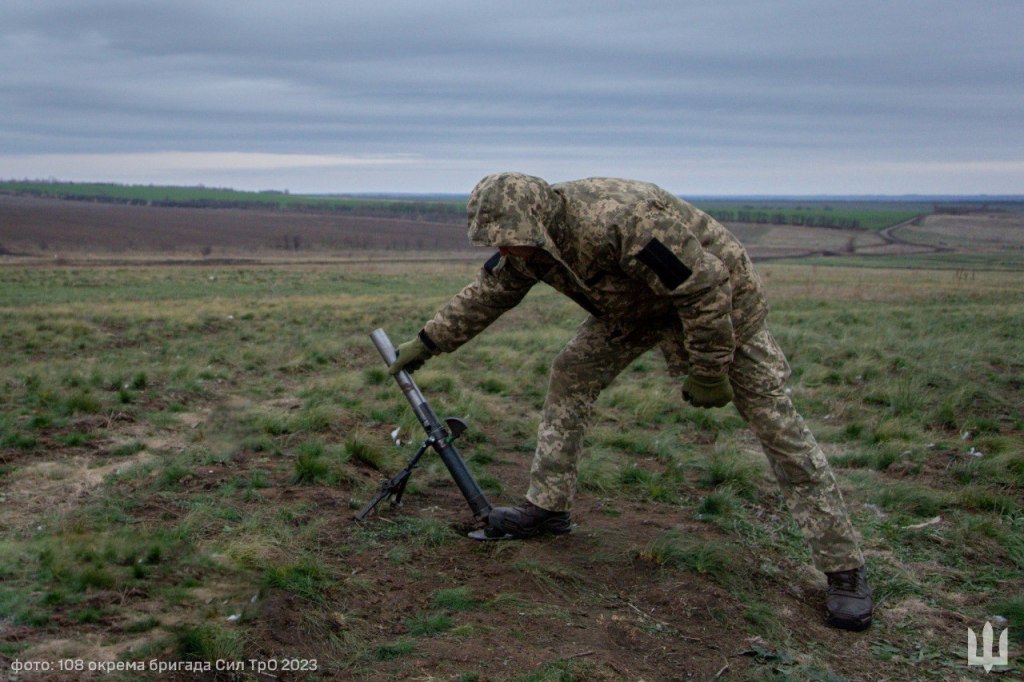
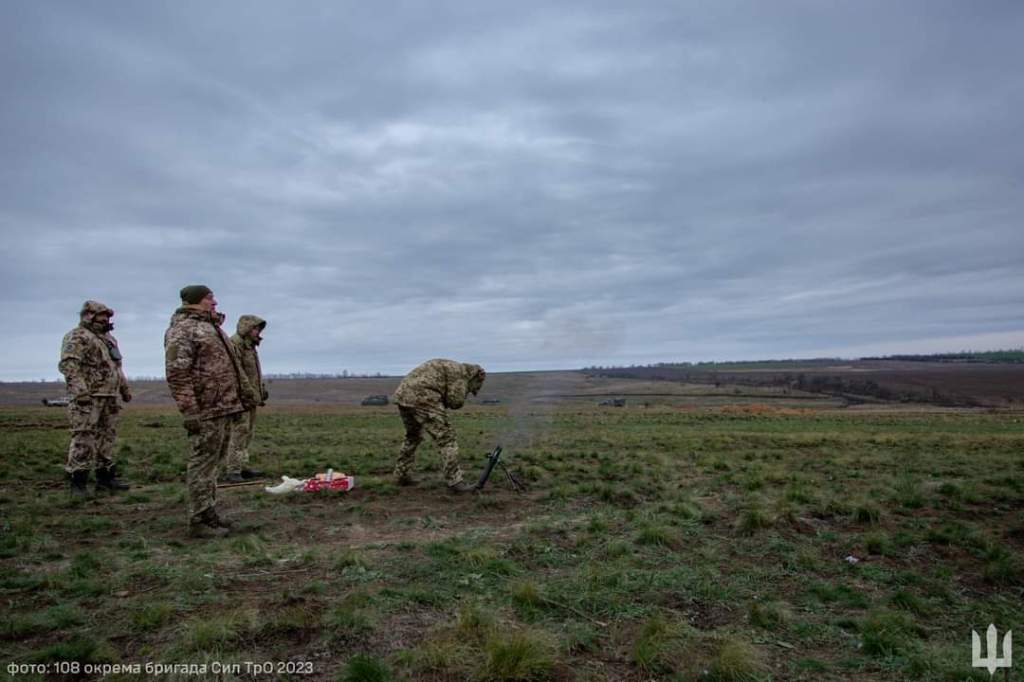
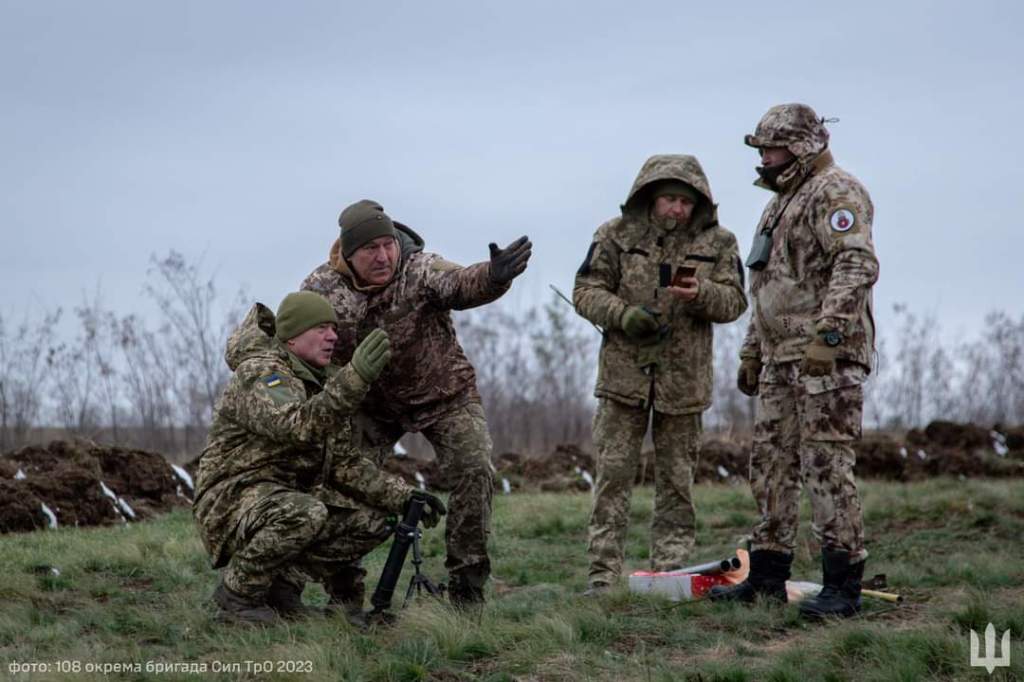

Update – 17/8/24: A new sighting of the 40mm grenade mortar showing some of the loading and firing steps.
Support Us: If you enjoyed this video and article please consider supporting our work here. We have some great perks available for Patreon Supporters – including early access to custom stickers and early access to videos! Thank you for your support!
Discover more from The Armourers Bench
Subscribe to get the latest posts sent to your email.
